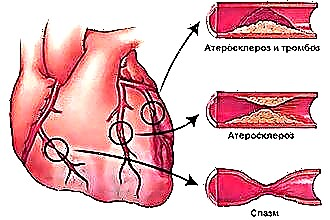After childbirth, the woman's immunity does not immediately restore its strength, which predisposes the appearance of frequent colds. During this period, it is especially important not to harm the child with drugs that are used in the treatment of the common cold. A runny nose while breastfeeding is common, but treatment should be taken very carefully.
 What is the danger of a runny nose with HS? First, the child is in direct contact with a sick mother for a long time. If the cause of rhinitis is an infection, there is a high risk of transmission by airborne droplets. Secondly, the infection can circulate through the mother's bloodstream, predisposing to the generalization of the infectious process. In this case, the likelihood of infection of the child also increases.
What is the danger of a runny nose with HS? First, the child is in direct contact with a sick mother for a long time. If the cause of rhinitis is an infection, there is a high risk of transmission by airborne droplets. Secondly, the infection can circulate through the mother's bloodstream, predisposing to the generalization of the infectious process. In this case, the likelihood of infection of the child also increases.
Thirdly, medications that a woman uses can penetrate into breast milk and enter the baby's body.
The severity of complications depends on the cause of the common cold, the woman's immunity and treatment tactics.
Reasons for the appearance of rhinorrhea
There are many factors that directly or indirectly affect the appearance of snot. Rhinorrhea can be the only symptom of the disease, for example, with vasomotor rhinitis, or it can be a manifestation of diseases such as influenza, sinusitis, or allergies. To correctly determine the cause of nasal congestion, you need to consult a doctor.
The most common causes of mum's rhinitis include:
- allergic reaction. It can develop after contact with animals, inhalation of pollen, fluff, fragrances, perfumes, chemicals, use of household chemicals or personal care products. During lactation, a woman is advised to adhere to a diet, limit the use of foods that often cause allergies. This applies to chocolate, seafood, citrus fruits and various colors that are added to products. You need to be careful when taking medications, including vitamins, which may be allergens;
 infectious agents (viruses, bacteria). Among viral agents, it is worth highlighting rhinovirus, adenovirus infection and influenza. As for bacteria, streptococcus or staphylococcus is often recorded, but infection with pneumococcus or Haemophilus influenzae is not excluded. To establish the type of pathogen, a microscopic and cultural study is prescribed, according to the results of which the therapeutic tactics are determined;
infectious agents (viruses, bacteria). Among viral agents, it is worth highlighting rhinovirus, adenovirus infection and influenza. As for bacteria, streptococcus or staphylococcus is often recorded, but infection with pneumococcus or Haemophilus influenzae is not excluded. To establish the type of pathogen, a microscopic and cultural study is prescribed, according to the results of which the therapeutic tactics are determined;- trauma to the nose, curvature of the septum, which is the reason for the obstructed passage of air and the development of chronic rhinitis;
- general hypothermia;
- dry, polluted air irritates the nasal mucosa, predisposing to the appearance of puffiness and hypersecretion;
- polyposis formations in the nose can irritate the cilia of the epithelium and provoke rhinorrhea;
- chronic infections of the nasopharynx, for example, with sinusitis or pharyngitis, can be activated after hypothermia or inhalation of cold air;
- vasomotor rhinitis, which can be caused by endocrine pathology or dysfunction of the nervous system. The appearance of snot is caused by a violation of the regulation of the diameter of blood vessels, due to which they lose the ability to adequately respond to various factors and are often in an expanded state.
Do not forget about rhinitis caused by hormonal fluctuations that are observed in a woman's body after childbirth.
Clinical signs
Rhinitis can manifest itself in varying degrees of severity, depending on the cause of the pathology. In the case of an allergic origin of the common cold, a woman may be bothered by:
- itching of the skin, eyes, nose;
- nasal congestion;
- rhinorrhea (discharge is usually watery and transparent);
- sneezing;
- coughing;
- sore throat;
- lacrimation;
- hyperemia of the conjunctiva;
- rashes on the skin.
An infectious rhinitis in a nursing mother manifests itself:
- nasal congestion;
- difficult nasal breathing;
- nasal voice;
- rhinorrhea (watery discharge gradually becomes thick with a yellowish tinge);
- hyperthermia;
- aching muscles, joints;
- decreased appetite;
- headache, dizziness;
- weakness.
As the infection spreads, you may experience sore throat, paranasal pain, and coughing. If a runny nose during lactation is due to non-infectious factors, the clinical signs are:
- rhinorrhea (often of a mucous nature);
- nasal congestion;
- Difficulty nasal breathing.
A runny nose goes through several stages, which are characterized by their own clinical picture:
- in the first two days, the woman is worried about frequent sneezing and profuse nasal discharge of a watery nature. It flows from the nose almost constantly, rhinorrhea decreases slightly in a horizontal position. At this stage, there is hyperemia of the nasal mucosa, conjunctiva and lacrimation;
- starting from 3-4 days, there are thicker nasal discharge, nasal voice, possibly a sore throat and a feeling of snot flowing down the posterior pharyngeal wall. Discharge from the nose becomes yellowish;
- after a week from the onset of a runny nose, the volume of nasal discharge decreases to a minimum, which indicates the end of the disease. If at this moment a woman is too cold or will communicate with a sick person, there is a risk of re-development of the disease.
Possible complications
In the absence of treatment or early termination of it, complications may develop:
 prolonged contact with an allergen and persistence of an allergic reaction leads to the development of bronchospasm and bronchial asthma;
prolonged contact with an allergen and persistence of an allergic reaction leads to the development of bronchospasm and bronchial asthma;- the presence of an infection in the inflammatory focus can lead to the chronicity of the infectious process, which will be difficult to cure in the future;
- infection of the child (with generalization of the infection);
- spread of inflammation and swelling to the auditory tube and ear departments. As a result, the woman's hearing decreases, there is pain and a "flapping" in the ears is felt;
- with involvement in the process of the oropharynx, the development of pharyngitis, laryngitis, as well as inflammation of the lower respiratory regions is possible.
Is it possible to continue lactation with a cold?
When rhinorrhea appears, it is not advisable to stop lactation, because the inflammation is limited to the nasopharynx. In addition, a baby with breast milk receives protective components produced by the mother's immune system.
A runny nose when feeding is not an indication for stopping lactation.
The baby is at increased risk of getting sick if feeding is stopped for 7-10 days. Even with hyperthermia, the beneficial properties of milk do not disappear, so it continues to benefit the baby. In addition, by stopping feeding, a woman harms not only the baby, but also herself. Incorrect expression of milk leads to the development of lactostasis and increases the risk of mastitis, which is especially unpleasant for a woman.
It is imperative to agree with a doctor about which medications are allowed to be taken so as not to harm the baby. The question of stopping lactation is raised when prescribing antibacterial drugs to a nursing woman.
How to protect a child from infection?
In order to protect the child from illness as much as possible, you need to adhere to certain rules. They will protect a small organism from infection and prevent the appearance of rhinorrhea:
- you should not interrupt feeding, because the baby receives protective antibodies with breast milk;
- during lactation, mommy should wear a disposable mask so that viruses cannot be transmitted by airborne droplets;
- spend less time with your child. You can ask your husband, sister, parents to be with the baby;
- for the baby, you need to allocate a separate room, regularly ventilate it, humidify the air and carry out wet cleaning, reducing the concentration of infectious pathogens in the air;
- walk with children on the street more often. You need to dress them "according to the weather", not wrapping them up much, however, avoiding hypothermia;
- in consultation with the doctor, nasal drops for a child with immunomodulatory and antiviral effects (Nazoferon) may be recommended;
- rinsing the nasal cavities in children can be performed using saline solutions. They are absolutely harmless and can be used prophylactically. For infants, Aqua Maris drops are recommended.
A runny nose in a nursing mother usually goes away in a week, during which you need to be especially careful to prevent a cold in a child.
Prevention of rhinitis in mom
The health of the baby depends on the mother, so it is necessary not only to strengthen the child's immunity, but also not to forget about yourself. You can maintain immune defenses by observing the following guidelines:
- frequent walks in the park, forest area, as well as going to the sea can saturate the body with oxygen and strengthen the immune system;
- sports activities. Water procedures will benefit both mother and baby;
- when going outside during an epidemic, a woman should lubricate the nasal cavities with oxolinic ointment, which will reduce the risk of viral infection of the body;
- contact with the allergen should be avoided if the woman has already experienced allergic reactions;
- a healthy diet allows you to saturate the body with vitamins. To do this, you need to focus on fresh vegetables, herbs, fish, fruits and dairy products. You need to give up fatty, fried foods, hot spices, carbonated drinks, light carbohydrates, foods high in trans fats;
- when dealing with sick people, you should use a disposable mask;
- you need to monitor the activity of the infection in chronic foci, for example, in the throat or paranasal cavities;
- it is required to avoid hypothermia and drafts.
If a family member has a cold, he needs to wear a mask and use a separate dish. At the same time, a young mother can start rinsing the nasal passages with saline solutions or herbal decoctions (chamomile, sage). You can also inhale essential oils such as eucalyptus or tea tree.
If it was not possible to protect the child from the symptoms of a cold, you should not self-medicate. After consulting a doctor, it will be clear which medications can be used without fear, and which ones are better to refuse.

 infectious agents (viruses, bacteria). Among viral agents, it is worth highlighting rhinovirus, adenovirus infection and influenza. As for bacteria, streptococcus or staphylococcus is often recorded, but infection with pneumococcus or Haemophilus influenzae is not excluded. To establish the type of pathogen, a microscopic and cultural study is prescribed, according to the results of which the therapeutic tactics are determined;
infectious agents (viruses, bacteria). Among viral agents, it is worth highlighting rhinovirus, adenovirus infection and influenza. As for bacteria, streptococcus or staphylococcus is often recorded, but infection with pneumococcus or Haemophilus influenzae is not excluded. To establish the type of pathogen, a microscopic and cultural study is prescribed, according to the results of which the therapeutic tactics are determined; prolonged contact with an allergen and persistence of an allergic reaction leads to the development of bronchospasm and bronchial asthma;
prolonged contact with an allergen and persistence of an allergic reaction leads to the development of bronchospasm and bronchial asthma;

